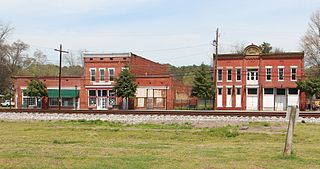
Kingston is a village in Bartow County, Georgia, United States. The population was 722 at the 2020 census.

Cleveland is the county seat of, and largest city in, Bradley County, Tennessee. The population was 47,356 at the 2020 census. It is the principal city of the Cleveland metropolitan area, Tennessee, which is included in the Chattanooga–Cleveland–Dalton, TN–GA–AL Combined Statistical Area.
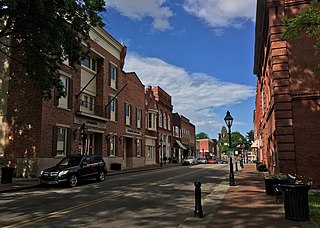
Rogersville is a town in, and the county seat of, Hawkins County, Tennessee, United States. It was settled in 1775 by the grandparents of Davy Crockett. It is named for its founder, Joseph Rogers. Tennessee's second oldest courthouse, the Hawkins County Courthouse, first newspaper The Knoxville Gazette, and first post office are all located in Rogersville. The Rogersville Historic District is listed on the National Register of Historic Places.

The Church of God, with headquarters in Cleveland, Tennessee, United States, is an international Holiness-Pentecostal Christian denomination. The Church of God's publishing house is Pathway Press.

The Cumberland Presbyterian Church is a Presbyterian denomination spawned by the Second Great Awakening. In 2019, it had 65,087 members and 673 congregations, of which 51 were located outside of the United States. The word Cumberland comes from the Cumberland River valley where the church was founded.

The Tennessee River is the largest tributary of the Ohio River. It is approximately 652 miles (1,049 km) long and is located in the southeastern United States in the Tennessee Valley. The river was once popularly known as the Cherokee River, among other names, as the Cherokee people had their homelands along its banks, especially in what are now East Tennessee and northern Alabama. Additionally, its tributary, the Little Tennessee River, flows into it from Western North Carolina and northeastern Georgia, where the river also was bordered by numerous Cherokee towns. Its current name is derived from the Cherokee town, Tanasi, which was located on the Tennessee side of the Appalachian Mountains.

Dixie Highway was a United States auto trail first planned in 1914 to connect the Midwest with the South. It was part of a system and was expanded from an earlier Miami to Montreal highway. The final system is better understood as a network of connected paved roads, rather than one single highway. It was constructed and expanded from 1915 to 1929.
The Church of God, Mountain Assembly (CGMA) is a Holiness Pentecostal Christian body formed in 1907, with roots in the late 19th-century American holiness movement and early 20th-century Pentecostal revival. The denomination maintains headquarters in Jellico, Tennessee and is a member of the Pentecostal/Charismatic Churches of North America.
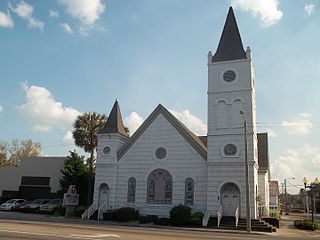
The black church is the faith and body of Christian denominations and congregations in the United States that predominantly minister to, and are also led by African Americans, as well as these churches' collective traditions and members. The term "black church" may also refer to individual congregations, including in traditionally white-led denominations.

The East Tennessee, Virginia and Georgia Railroad (ETV&G) was a rail transport system that operated in the southeastern United States during the late 19th century. Created with the consolidation of the East Tennessee and Virginia Railroad and the East Tennessee and Georgia Railroad in 1869, the ETV&G played an important role in connecting East Tennessee and other isolated parts of Southern Appalachia with the rest of the country, and helped make Knoxville one of the region's major wholesaling centers. In 1894, the ETV&G merged with the Richmond and Danville Railroad to form the Southern Railway.
A mission of the Church of Jesus Christ of Latter-day Saints is a geographical administrative area to which church missionaries are assigned. Almost all areas of the world are within the boundaries of an LDS Church mission, whether or not any of the church's missionaries live or proselytize in the area. As of July 2020, there were 407 missions of the church.
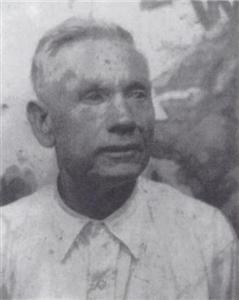
George Went Hensley was an American Pentecostal minister best known for popularizing the practice of snake handling. A native of rural Appalachia, Hensley experienced a religious conversion around 1910: on the basis of his interpretation of scripture, he came to believe that the New Testament commanded all Christians to handle venomous snakes.

The Northwest Georgia Council is a local council of the Boy Scouts of America which currently encompasses Bartow, Chattooga, Floyd, Gordon, Murray, Polk, and Whitfield counties. In the early 1980s, affiliations with Catoosa and Murray counties were transferred to the Cherokee Area Council of Chattanooga, Tennessee, but associations with Murray county were later returned to the Northwest Georgia Council in 1995. The first troop chartered by the Northwest Georgia Council was Troop 12 of Dalton, Georgia, which was established by Mr. W. M. Sapp on March 14, 1911. The council's oldest continually chartered troop, Troop 12 of Adairsville, Georgia, was chartered soon after in 1915. The headquarters of the Northwest Georgia Council are located in Rome, Georgia. The current Scout Executive for the Northwest Georgia Council is Matt Hart.
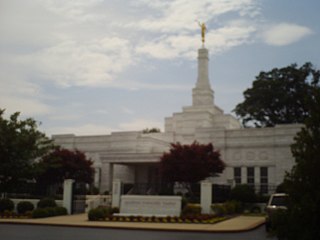
The Church of Jesus Christ of Latter-day Saints in Tennessee refers to the Church of Jesus Christ of Latter-day Saints and its members in Tennessee. The first branch in Tennessee was organized in 1834. It has since grown to 57,422 members in 112 congregations.
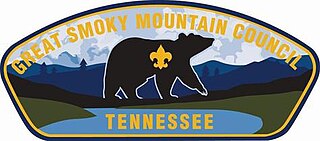
The Great Smoky Mountain Council is a local council of the Boy Scouts of America in Tennessee, with headquarters in Knoxville. It serves 21 East Tennessee counties that span two time zones. Camp Buck Toms is a summer camp owned and operated by the Great Smoky Mountain Council. The camp is located outside Rockwood, Tennessee, on the shores of Watts Bar Lake.

The 18th Georgia Infantry Regiment was an infantry regiment in the Confederate Army during the American Civil War. Originally brigaded with the three Texas regiments of John Bell Hood's Texas Brigade, it was transferred to Thomas R.R. Cobb's Georgia Brigade after the Battle of Antietam in late 1862. After General Cobb was mortally wounded at the Battle of Fredericksburg, the original colonel of the 18th Georgia, William T. Wofford, became Brigadier General of the Georgia Brigade.
The 11th Kentucky Cavalry Regiment was a cavalry regiment that served in the Union Army during the American Civil War.

The 4th Kentucky Infantry Regiment was an infantry regiment that served in the Confederate States Army during the American Civil War. It was part of the First Kentucky Brigade.
The 6th Regiment Indiana Cavalry was a cavalry regiment that served in the Union Army during the American Civil War.

Roy Elonzo Davis was an American preacher, white supremacist, and con artist who co-founded the second iteration of the Ku Klux Klan in 1915. Davis was Second Degree of the KKK under William J. Simmons and later became National Imperial Wizard (leader) of the Original Knights of the Ku Klux Klan. He worked closely with Simmons, and was a co-author of the 1921 KKK constitution, bylaws and rituals. Davis spent decades as a KKK recruiter, at one point being named "Royal Ambassador" and an "Official Spokesperson" of the KKK by Simmons. Davis and Simmons were both expelled from the KKK in 1923 by Hiram Wesley Evans, who had ousted Simmons as leader. Simmons started the Knights of the Flaming Sword branch of the KKK and with Davis's help retained the loyalty of many KKK members. Davis was later reappointed second in command of the national KKK organization by Imperial Wizard Eldon Edwards, a position he held until being elected national leader by 1959.















